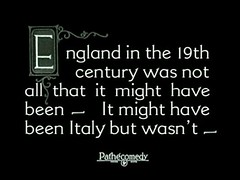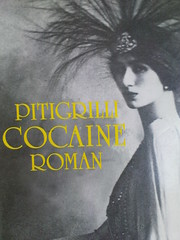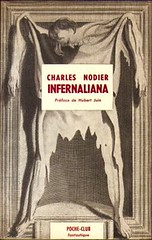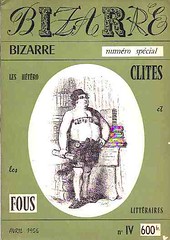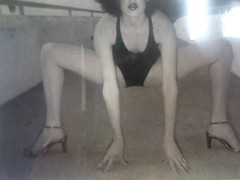Harold Pinter is dead @78
Harold Pinter (1930 – 2008) is the man I know from his auctorial descriptive Pinteresque, his connection to the Theatre of the Absurd and his screenplay work on other writers’ novels, such as The Servant (1963), The Go-Between (1970), The French Lieutenant’s Woman (1980), and especially The Comfort of Strangers[1][2] (1990), one of the more devastating film experiences of the eighties.
[Youtube=http://www.youtube.com/watch?v=tjdKxVFd_K8]
Outside of theatre, Pinter’s most popular lemma is the title of his play The Birthday Party, which survives to this day as Nick Cave‘s band The Birthday Party.
[Youtube=http://www.youtube.com/watch?v=l5I2vEcVC_I&]
“Nick The Stripper” (1981) by The Birthday Party
Theatre of the Absurd
Harold Pinter is a defining playwright of the 1962-coined Theatre of the Absurd theatrical movement along with French Eugène Ionesco, British Samuel Beckett, French Jean Genet, and Russian Arthur Adamov. The movement’s avant-la-lettre predecessors include Alfred Jarry, Luigi Pirandello, Stanislaw Ignacy Witkiewicz, Guillaume Apollinaire, and the Surrealists. Other playwrights associated are Tom Stoppard, Friedrich Dürrenmatt, Fernando Arrabal and Edward Albee.
Pinteresque
I don’t know what to think of Pinteresque. I feel as if Pinter and Buñuel share a set of the same sensibilities but I wonder. If one does a Celebrity Deathmatch between Pinteresque[3] and Buñuelian[4], Pinter wins with 19000+ vs 6000+ for Bunuel. Which is a pity, because I find Buñuelian absurdism a fuller experience than the Pinteresque, Buñuel manages to add spiritualism, humor and sensuality to his work whereas Pinter seems to bog down in kitchen-sink-naturalism. But Pinteresque is clearly the winner here, with Wikipedia defining Pinteresque in their separate article characteristics of Harold Pinter’s work and clearly no Buñuelian counterpart.
The Pinter pause
Another interesting aspect of Pinter’s work is his use of pauses, typographically represented by ellipses. Pinter uses it to such an extent that it has gained fame as the “Pinter pause“, a theatrical technique used for example to great effect in the water dripping faucet seduction scene in The Servant (1963).
The following exchange between Aston and Davies in The Caretaker is typical of the Pinter pause:
- ASTON. More or less exactly what you…
- DAVIES. That’s it … that’s what I’m getting at is … I mean, what sort of jobs … (Pause.)
- ASTON. Well, there’s things like the stairs … and the … the bells …
- DAVIES. But it’d be a matter … wouldn’t it … it’d be a matter of a broom … isn’t it?
Still, I prefer my ellipses by Céline (although he shares Pinter’s pessimism), who famously used them in Death on the Installment Plan in 1936, and which then became his trademark style, giving innovative, chaotic, and antiheroic visions of human suffering. In Death on the Installment Plan, he extensively uses ellipses scattered all throughout the text to enhance the rhythm and to emphasise the style of speech.
An example of Céline’s ellipses:
- “So I start moseying down the Boulevard Sebastopol, then the rue de Rivoli . . . I’ve kind of lost track. It’s so stifling you can hardly move . . . I drag myself through the arcades . . . along the shop fronts . . . “How about the Bois de Boulogne!” I says to myself . . . I kept on walking quite a while . . . But it was getting to be unbearable . . . unbearable . . . When I see the gates of the Tuileries, I turn off … across the street and into the gardens . . . There was a hell of a crowd already.” —Death on the Installment Plan

